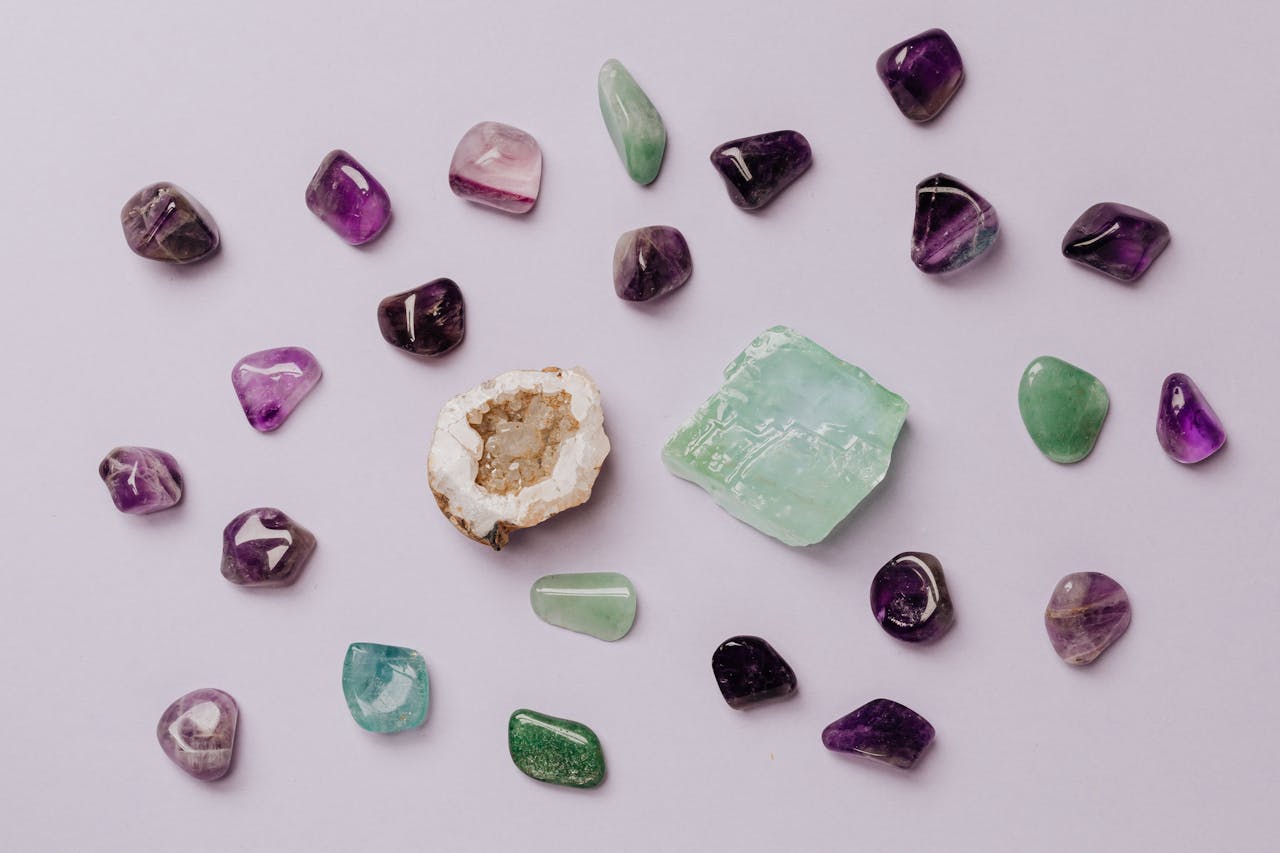

Buying gemstone jewelry is an exciting and meaningful experience, whether you’re purchasing a special gift, an engagement ring, or simply treating yourself to something beautiful. However, with the wide variety of gemstones available, understanding what makes a gemstone truly valuable can be challenging. This guide will help you navigate the key aspects of gemstone quality, ensuring that you make an informed and confident purchase.
Similar to diamonds, gemstones are often evaluated based on the “4 Cs”: Color, Clarity, Cut, and Carat weight. Understanding these factors will give you a solid foundation for assessing the quality of any gemstone.
1. Color
Color is perhaps the most critical factor in determining a gemstone’s value. The most desirable gemstones exhibit a rich, vibrant color that is evenly distributed throughout the stone. When evaluating color, three key components come into play:
For example, the ideal sapphire color is often described as a deep, vivid blue with a medium to medium-dark tone. Similarly, the most valuable rubies have a rich, “pigeon’s blood” red hue with high saturation.
2. Clarity
Clarity refers to the presence of inclusions or blemishes within a gemstone. Inclusions are natural imperfections that occur as the gemstone forms, while blemishes are surface imperfections. Generally, the fewer inclusions or blemishes a gemstone has, the higher its value. However, some inclusions can be unique and add character to the stone without significantly affecting its beauty or durability.
Certain gemstones, like emeralds, are known for having more inclusions, which are often accepted as part of their natural beauty. When evaluating clarity, it’s important to consider whether the inclusions are visible to the naked eye and if they impact the stone’s overall appearance.
3. Cut
The cut of a gemstone refers to how well it has been shaped and faceted by a gem cutter. A well-cut gemstone reflects light beautifully, enhancing its brilliance and color. The quality of the cut can significantly affect the gemstone’s appearance and value.
Common cuts include:
A poorly cut gemstone may appear dull or lackluster, even if the color and clarity are excellent. When buying gemstone jewelry, look for stones with a well-proportioned and symmetrical cut that enhances their natural beauty.
4. Carat Weight
Carat weight measures the size of a gemstone, with one carat equivalent to 200 milligrams. While larger gemstones are often more valuable, size is not the only factor to consider. A smaller gemstone with excellent color, clarity, and cut can be more valuable than a larger stone with poor quality in these areas.
It’s also important to note that carat weight affects the price per carat. As the size of the gemstone increases, the price per carat usually increases as well, especially for high-quality stones.
When purchasing gemstone jewelry, it’s essential to ensure that the gemstones are authentic and of high quality. A gemstone certification from a reputable gemological laboratory provides an independent evaluation of the stone’s characteristics, including the 4 Cs. This certificate serves as a guarantee of the gemstone’s authenticity and helps protect your investment.
Some of the most respected gemological laboratories include:
Always ask for a certificate when buying a high-value gemstone, especially if it’s a significant purchase like an engagement ring.
In recent years, ethical sourcing has become an important consideration for gemstone buyers. Ethically sourced gemstones are mined and produced under fair labor practices, without causing harm to the environment or local communities. Choosing ethically sourced gemstones not only supports sustainable practices but also ensures that your purchase does not contribute to unethical activities such as child labor or environmental degradation.
Look for jewelers who are transparent about the origins of their gemstones and who adhere to ethical sourcing standards. Certifications such as the Kimberley Process for diamonds and fair trade certifications for colored gemstones can provide assurance that the stones have been sourced responsibly.
When buying gemstones, it’s important to be aware of common misconceptions that can lead to poor purchasing decisions:
Misconception 1: All Gemstones Are Natural
Not all gemstones on the market are natural. Some are synthetic or lab-created, meaning they were made in a laboratory rather than formed naturally in the earth. While synthetic gemstones have the same chemical and physical properties as natural stones, they are usually less valuable. Always verify whether a gemstone is natural or synthetic before purchasing.
Misconception 2: Bigger Is Always Better
As mentioned earlier, carat weight is only one factor in determining a gemstone’s value. A larger gemstone with poor color, clarity, or cut may be less desirable than a smaller stone with excellent quality in these areas.
Misconception 3: All Gemstones Are Treated Equally
Many gemstones undergo treatments to enhance their color or clarity. Common treatments include heat treatment for sapphires and rubies and oil treatment for emeralds. While treated gemstones can still be valuable, untreated stones are often more sought after. It’s important to ask whether a gemstone has been treated and to what extent.
Proper care and maintenance are crucial for preserving the beauty and longevity of your gemstone jewelry. Here are some tips to help you keep your gemstones looking their best:
Subscribe to our newsletter and get 10% off your first purchase! Stay updated with the latest news, offers, and gemstone trends.
2 Responses
My brother suggested I might like this blog He was totally right This post actually made my day You can not imagine simply how much time I had spent for this info Thanks
замовлення просування сайтів